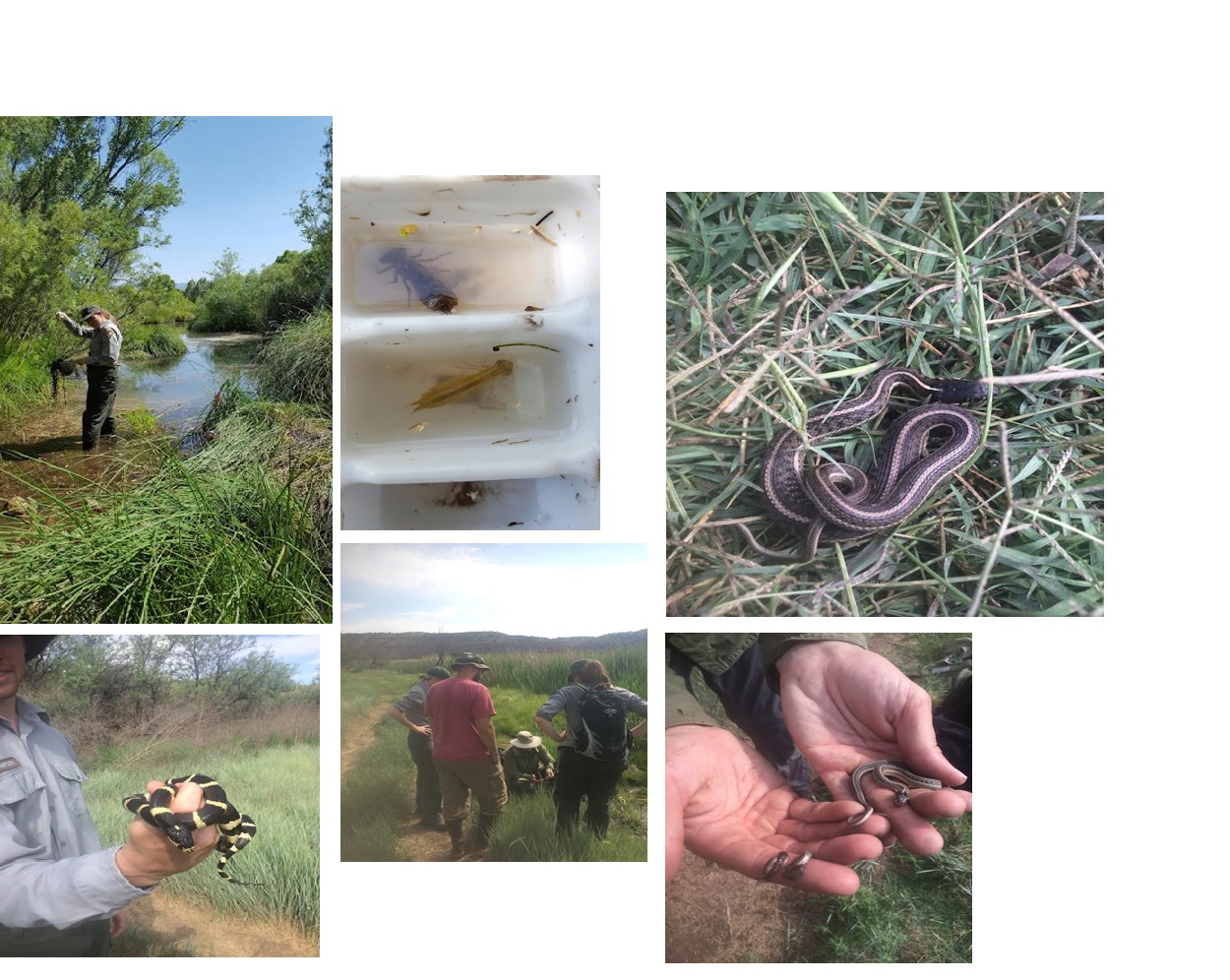I met the natural resource crew along with two researchers from NAU named Iain Emmons and Kayla Christy at the marsh to do some Northern Mexican Garter Snake surveys. The traps that we made last week had been placed around the whole marsh area as well as some parts of the Verde River. There are about 100 traps total, but I only helped to check the first fifty. Checking the traps involved getting a little dirty because the traps were halfway submerged in marsh water, which was muddy and didn't smell too pleasant. It was exciting to check each trap because I never knew what I was going to find; we found many water beetles, spiders, tadpoles, frogs, and a creature with a slug-like body and huge pinchers. Each organism was recorded in a journal by either Kayla or Iain.
Just as hope was starting to dwindle, one of the traps that was checked contained a baby Northern Mexican Garter Snake! It was super cute and docile; each one of us got to hold the little snake and Iain gave us some great information, including how to identify the particular species. While Iain was holding it, the snake regurgitated its food onto his hand, which consisted of about four tadpoles. He said this was normal and that the snake most likely had more food in its stomach to regurgitate (which proved to be true). Right before we were about to start collecting data, Fraser Watson walked up to us holding a large California King Snake that he had just found! This snake was also extremely docile as we were all able to hold it with ease. Fraser said that this was the calmest wild snake he had ever encountered.
Kayla and Iain collected data on both snakes which included total length, snout vent length, tail length, mass, and weight. They also determined that both of the snakes are female. Iain and Kayla snipped a tiny end piece of the Garter Snake's tail to take to a lab, which will allow them to determine the snake's genetics. They caught a Northern Mexican Garter Snake yesterday, and the snake was about the same size as the one caught today, meaning that the two snakes may be related. If the snakes are related this is a good sign because it means that there may be a whole litter of snakes that have recently hatched in the area.
When we checked the traps on the other side of the marsh we didn't find any snakes, but we did find that there were unpredictable deep areas in the murky water. I remember walking through the reeds with just my shoes in the water and then dropping straight into water that went up to my waist. I really enjoyed checking the snake traps. The marsh is a very unique ecosystem that holds an abundance of all types of organisms.
After half of the snake traps had been checked, the natural resources crew along with myself and the researchers from NAU split up; we went to collect more dragonfly larvae to continue our task from last week while they continued with the snake traps. We ended up with a total of four larvae; we wanted eight to add to the seven from last week for a total of fifteen, but I guess the crew will just have to go out again sometime soon. I caught two by scraping underneath some of the water plants with my net. I also caught multiple minnows and even some baby sunfish! Often times I thought I caught dragonfly larvae but it turned out to just be damselfly larvae. I had some truly unique experiences today and I feel that it is almost impossible to get bored when working with the natural resources department!

